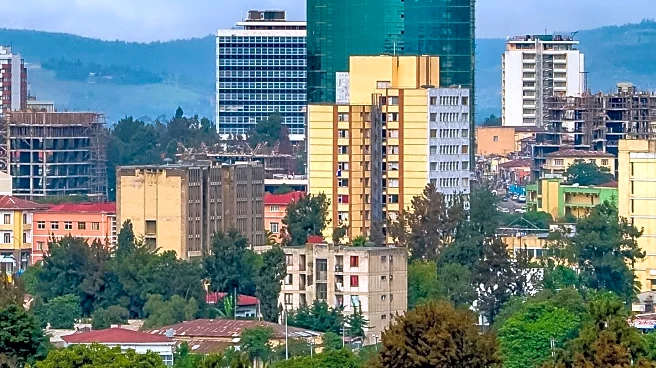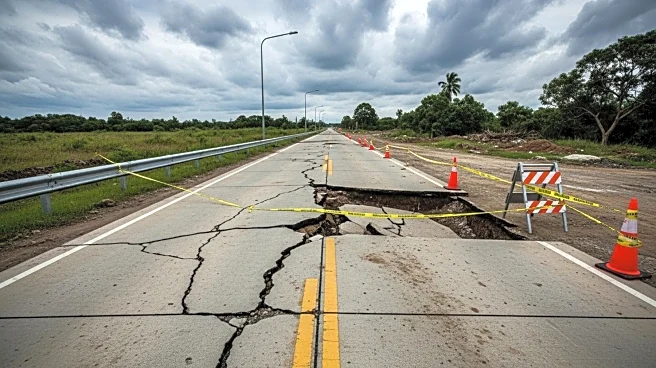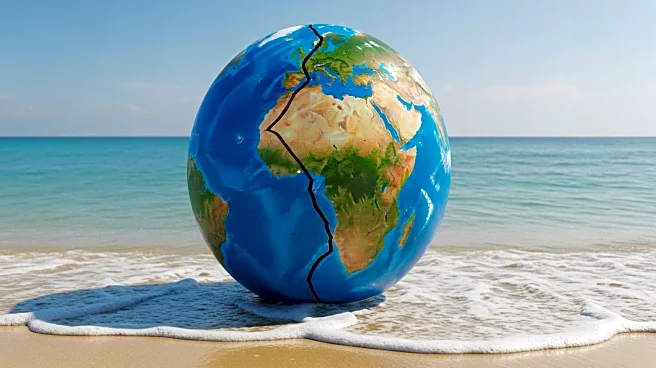What's Happening?
A magnitude 5.7 earthquake occurred in Ethiopia on Saturday, as reported by the German Research Center for Geosciences (GFZ). The earthquake struck at a depth of 10 kilometers (6.2 miles), causing significant tremors in the region. The event has drawn attention to the geological activity in Ethiopia, which is part of the East African Rift system known for seismic activity. The earthquake's impact on local communities and infrastructure is being assessed, with potential implications for emergency response and disaster management efforts.
Why It's Important?
The earthquake highlights the vulnerability of regions within the East African Rift system to seismic events, which can have profound effects on local populations and infrastructure. Such natural disasters can disrupt daily life, cause economic losses, and necessitate international aid and support. The event underscores the importance of preparedness and resilience in areas prone to earthquakes, as well as the need for effective disaster response strategies. It also raises awareness about the geological dynamics of the region, which can inform future research and policy decisions.
What's Next?
Authorities in Ethiopia are likely to conduct assessments to determine the extent of damage and coordinate relief efforts for affected communities. International organizations may offer assistance in disaster management and recovery. The earthquake may prompt discussions on improving infrastructure resilience and emergency preparedness in Ethiopia and other regions within the East African Rift system. Additionally, scientific research may focus on understanding the seismic activity in the area to better predict and mitigate future events.
Beyond the Headlines
The earthquake in Ethiopia brings attention to the broader issue of natural disaster preparedness and the role of international cooperation in addressing such challenges. It highlights the need for investment in infrastructure that can withstand seismic events and the importance of community education on disaster response. The event also serves as a reminder of the interconnectedness of global geological systems and the potential for cross-border impacts of natural disasters.











